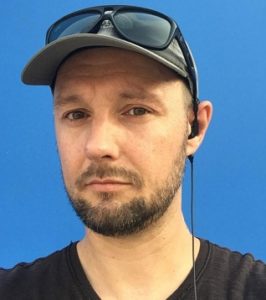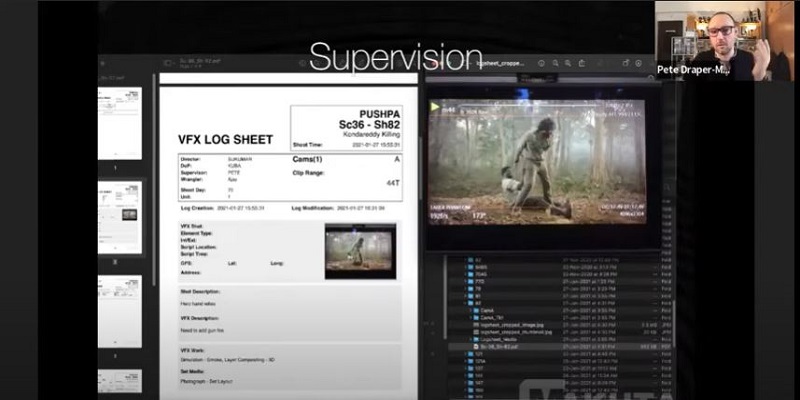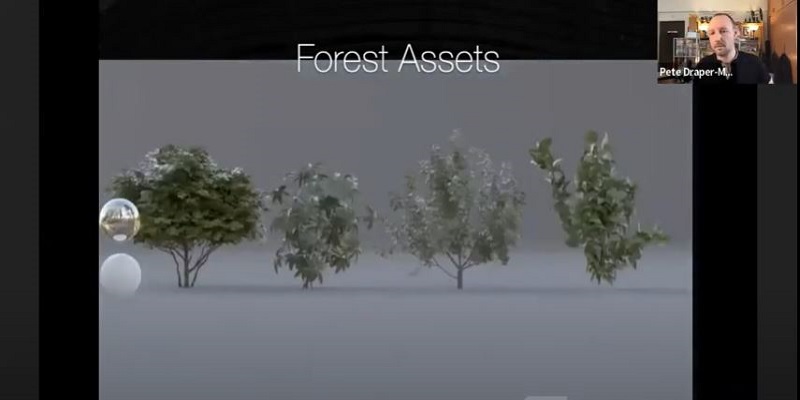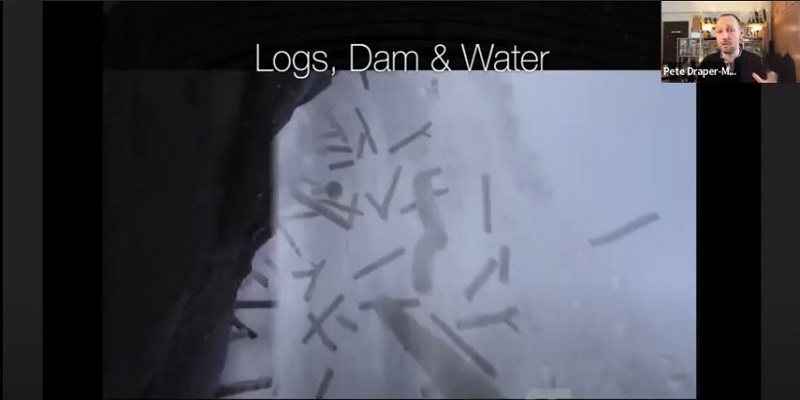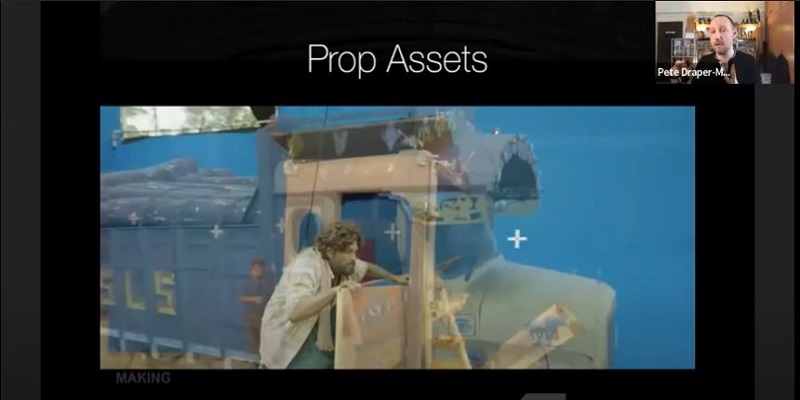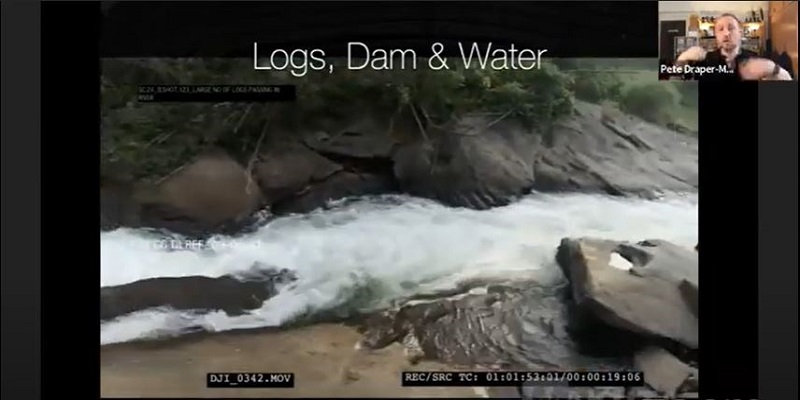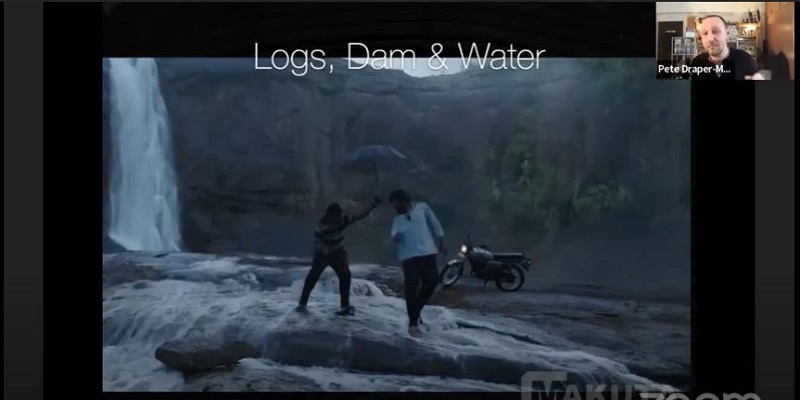
The VAM summit observed the session on the Making of Pushpa and Makuta division head and chief technical director Pete Draper shared the VFX breakdown followed by the nitty-gritty that went behind the making of it.
As soon as Makuta joined the team, the first thing they did was to discuss with the client on what is actually necessary, what scenes can be anticipated, what problematic elements are there on shoot, basically they discussed things like cost, safety, and practicality.
For example, in one of the action sequences Allu Arjun had to drag the head of a goon which was not safe but there was a need for the scene. Hence Draper mentioned that it is always good to have a round of discussions with producers, art directors, directors and so on to understand the requirements in the early stage itself.
He further shared how the entire movie shots were organised scene-by-scene shot-by-shot so that the requirements for the VFX work also goes hand-in-hand simultaneously. “For Pushpa we did data acquisition – which is logging every single thing that happens on the set. We got a screenshot of the actual shot and put it in our application which tabulates everything and we collect all the data for every single take,” Draper added.
They logged things from time of day to demo shots to master take, GPS location. Also on the basis of location one can adjust the elements of the particular area. “For example, in this particular film everything was about the forestry, the wood and the surrounding topography, so drones captured the data scanning, LiDAR scanning, photogrammetry and image graphics which is collecting TBs of data of foliage, structures and land masses, so that if necessary, we can recreate it back in the studio just in case we need to refill and re-populate the elements of the background. In the clean up work we need to make sure that we have a lot of plates. If needed you can patch that thing and recreate it later on. We created things like flowers, foliage and so on,” Draper added.
They scanned things like environments, props and generated all digital elements that will be recreated digitally and duplicated it for example the sandalwood logs which were dumped into the river and then the waterfall and they had to generate lots and lots of elements for those. They scanned the entire location and determined where every single element, contrast, geography is, relative to where the cameras. This also allowed them to understand where the set extensions will be needed. “The climax floor which was set on the floor of Ramoji film city was handled by a third party vendor. They went through and took the geometry and we used that for camera tracking. So we knew exactly where certain things were. You do not need to put tracking markers for shots like this because you are using the geography of the actual set so you know where you are because you know where that particular piece of geography is located,” added Draper.
Apart from logs they also scanned vehicles primarily because they had a fair amount of camera moves going on and they had to create some digital crashes on the set. So on the spot it was not practical or safe to jump out of the moving vehicle, smashing to a well or in some cases lorry coming out of the well.
Foliage references that they shot earlier were recreated in the distribution system in Blender using geometry notes to create all of the foliage elements individually. So it’s not just four trees, they could have four thousand trees with a different permutation, variation of each and every single one. They could create variations of shades, scale, create multiple and new ones.
Even the dam seen in the movie was never opened. The team created the waterfall from the assets that they generated from various dam locations.
Draper also shared how the two waterfall scenes of the logs floating down the waterfall to the dam and waterfall seen in the Srivalli song are different from each other. He said, “Logs and dam shot for the movie are different from the shot of Pushpa with an umbrella in Srivalli song. Both the shots were shot from different locations. For the later one we actually ended up utilising backgrounds from our archive which is a photographic reference which we actually shot from Baahubali: The beginning. This is actually a background from the first Baahubali movie which is actually the Alleppey waterfalls in Kerala. The waterfall I believe is from a different location, rock face from another location, water in the background behind the actor with the umbrella is another location and full ground is Hyderabad and all for this one particular shot in the song,” Draper added.
“I always say to every director and producer if you can get in camera, it’s going to look better. VFX should be used for one of the three reasons – when it is not practical, it’s too expensive and when it’s not safe,” he shared.

